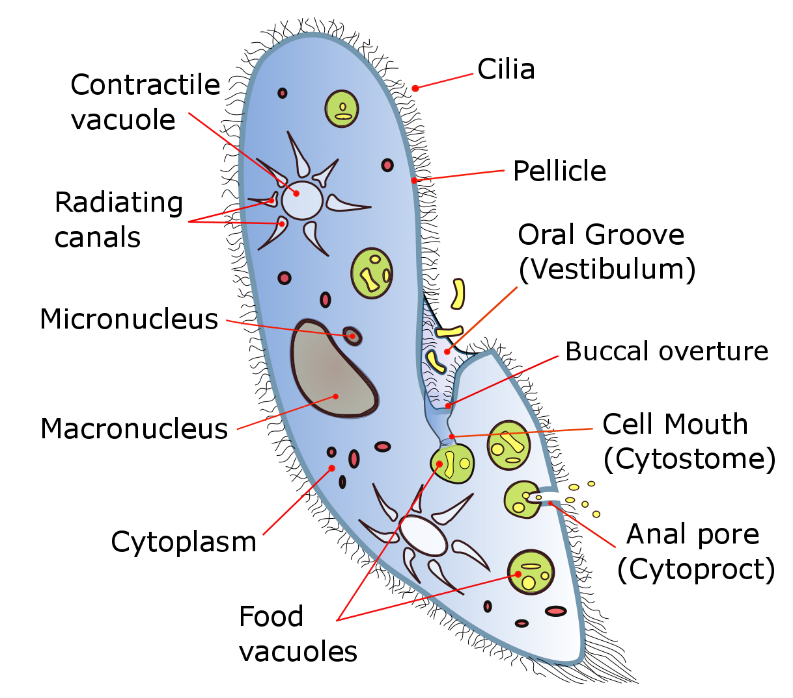
Animals of class Ciliata
A. Have two nuclei
B. Are autotrophs
C. Reproduce sexually
D. Possess cilia
Answer
507.6k+ views
Hint: Ciliates are organisms that belong to class Ciliata of kingdom Protista. Ciliates are basically protozoans that are typically characterized by the presence of hair-like locomotory structures commonly known as cilia.
Complete answer: Ciliates are single-celled organisms that use the cilia for locomotion as well as to gather food.
A typical Ciliate has two types of nuclei: a tiny, diploid micronucleus and a large, polyploid macronucleus.
The micronucleus or generative nucleus is responsible for carrying the germline of the cell and the macronucleus or vegetative nucleus is responsible for taking care of the normal cell regulation and helps in expressing the phenotype of the organism.
Most Ciliates are heterotrophs.
Ciliates reproduce asexually, by various kinds of fission. Ciliates are also known to reproduce sexually, by a process known as conjugation.

So, the correct answers are options A. Have two nuclei, C. Reproduce sexually, and D. Possess cilia </b>
Note: There are around 8,000 species present in class Ciliata; they are the most advanced group of protozoans in terms of physiological and morphological complexity.
The cilia are usually arranged in rows, known as kineties, on the pellicle. Some examples of Ciliates are Paramecium and Balantidium.
Complete answer: Ciliates are single-celled organisms that use the cilia for locomotion as well as to gather food.
A typical Ciliate has two types of nuclei: a tiny, diploid micronucleus and a large, polyploid macronucleus.
The micronucleus or generative nucleus is responsible for carrying the germline of the cell and the macronucleus or vegetative nucleus is responsible for taking care of the normal cell regulation and helps in expressing the phenotype of the organism.
Most Ciliates are heterotrophs.
Ciliates reproduce asexually, by various kinds of fission. Ciliates are also known to reproduce sexually, by a process known as conjugation.

So, the correct answers are options A. Have two nuclei, C. Reproduce sexually, and D. Possess cilia </b>
Note: There are around 8,000 species present in class Ciliata; they are the most advanced group of protozoans in terms of physiological and morphological complexity.
The cilia are usually arranged in rows, known as kineties, on the pellicle. Some examples of Ciliates are Paramecium and Balantidium.
Recently Updated Pages
Master Class 11 Economics: Engaging Questions & Answers for Success

Master Class 11 Business Studies: Engaging Questions & Answers for Success

Master Class 11 Accountancy: Engaging Questions & Answers for Success

Master Class 11 English: Engaging Questions & Answers for Success

Master Class 11 Computer Science: Engaging Questions & Answers for Success

Master Class 11 Maths: Engaging Questions & Answers for Success

Trending doubts
Which one is a true fish A Jellyfish B Starfish C Dogfish class 11 biology CBSE

State and prove Bernoullis theorem class 11 physics CBSE

1 ton equals to A 100 kg B 1000 kg C 10 kg D 10000 class 11 physics CBSE

In which part of the body the blood is purified oxygenation class 11 biology CBSE

One Metric ton is equal to kg A 10000 B 1000 C 100 class 11 physics CBSE

Difference Between Prokaryotic Cells and Eukaryotic Cells




